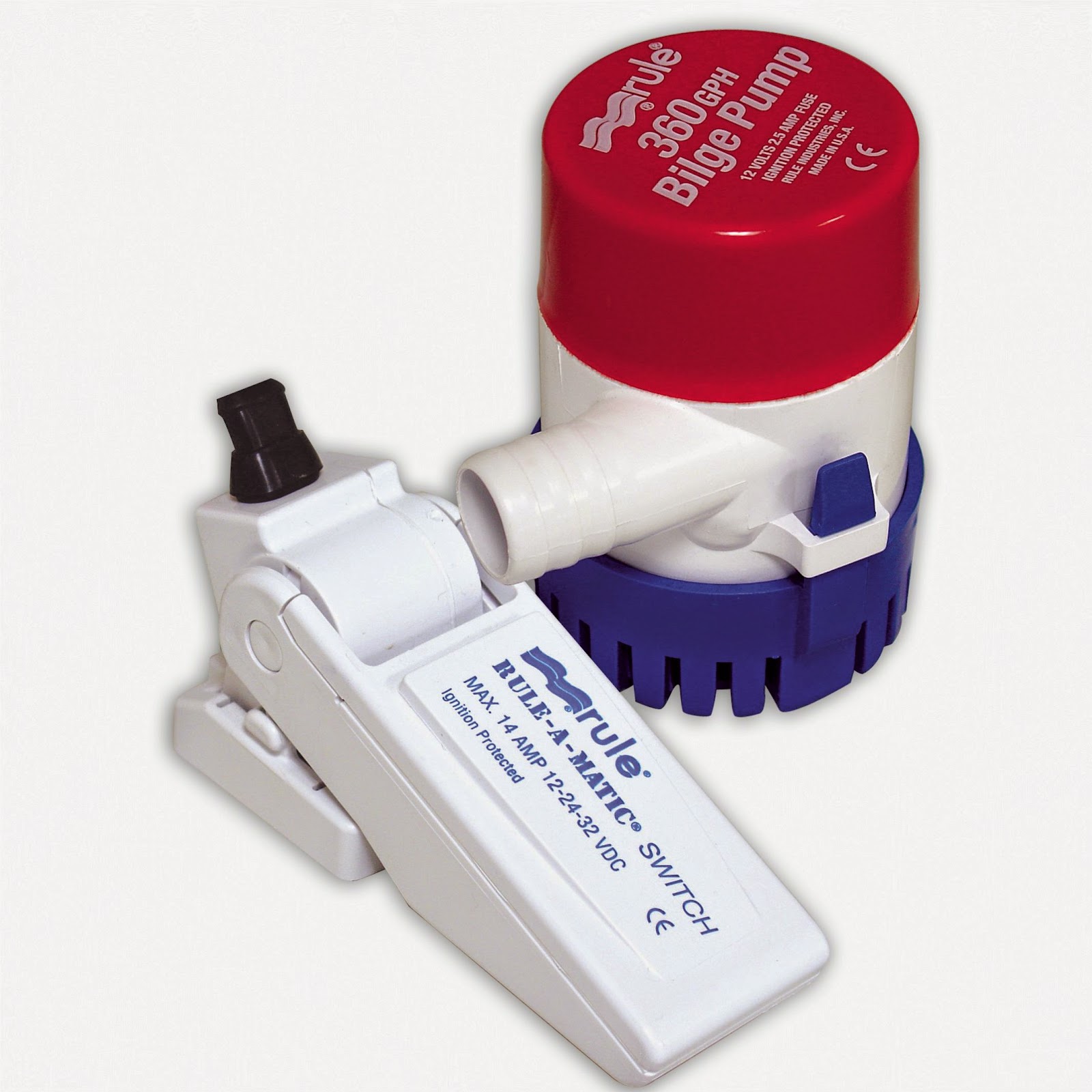Most bilge pumps are the centrifugal type. They hopefully come on when the water level in the bilge is above the float switch and the switch triggers the pump. They pump until the float switch falls and turns the pump off. What's left in the hose drains back into the bilge -- hopefully not activating the float switch again in an unending cycle.
Some pumps have built in float switches.
Some pumps are water sensing. They come on at an interval and if they sense water they'll turn on the pump. No sensed water and they'll rest until their timer tells them to sense again. Not only can these pumps not be tested, they can help deaden your battery even if they never come on.
I have chosen a different route for my boat. I like a diaphragm pump...for a couple reasons:
First the diaphragm pump can be mounted anywhere convenient because it's self priming:
No standing on your head with one arm over the motor and one arm under the oil pan to get to the pump.
Second, it doesn't need a filter and has valves to prevent back-flow.
So how does one make use of this diaphragm pump?
Well, I mounted my pump on the inside of the transom in a convenient place where it was easily accessible.
Then I plumbed the outlet to a through hull above the waterline, but it could just as easily have been below the waterline if the discharge looped above the waterline.
The intake was plumbed to a brass plate which was placed at the lowest part of the bilge under the oil pan. Then, instead of relying on the mechanical float switch to turn my diaphragm pump on, I used a Water Witch switch...with no moving parts. I mounted the Water Witch to the same brass plate as the water pickup.
 |
| Here you can see the pickup hose and the Water Witch sensor on a brass plate - to the top right is the diaphragm pump mounted on the inside of the transom. |
So why the Water Witch?
Water Witch
First, no moving parts, but what I really like about it is that it continues to run for 10 seconds after the water is below the sensor. This means that the bilge water can be well below the level of the sensor when the pump quits - as witnessed in the pic.
BUT, this diaphragm pump doesn't have the capacity of the better centrifugal pumps, so for security reasons I have installed the traditional high volume centrifugal pump for emergency situations should they arise.
Now a couple more pleasures I indulge in.
I have piezo buzzers wired to each bilge pump. These buzzers have different sounds so I can tell if/when either bilge pump comes on. If I'm in the rack, I want to know if my bilge pumps are coming on - wouldn't you?
I also have a manual switch for both pumps in the bilge where I can see if they're working. Most boats have these switches at the helm and there's no way to know whether activating them has any benefit.
Lastly, I test my bilge pumps by backing my boat into the water with the garboard drain plug out. If I don't hear both buzzers I know something needs attention.







